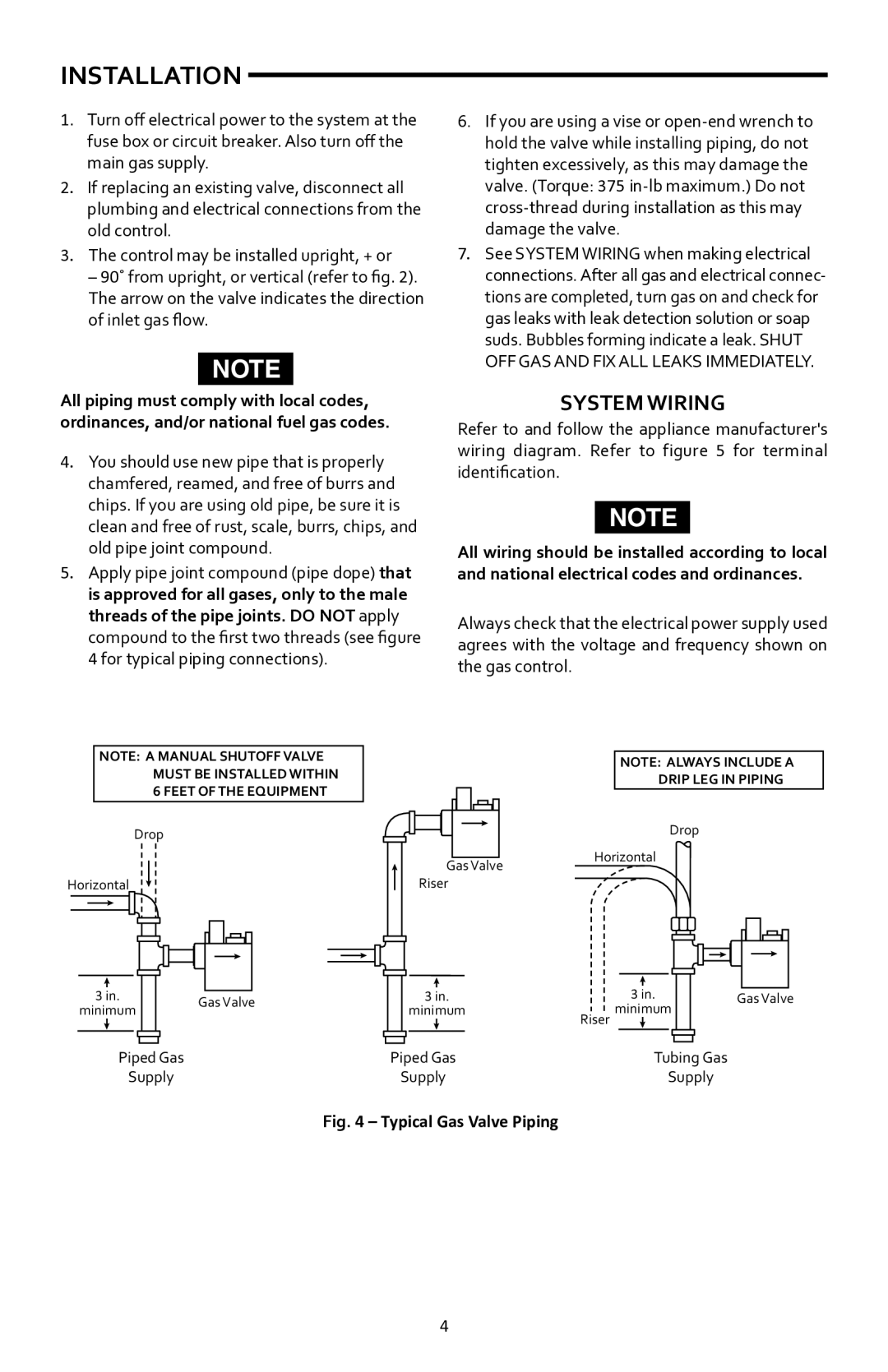
INSTALLATION
1. Turn off electrical power to the system at the fuse box or circuit breaker. Also turn off the main gas supply.
2.If replacing an existing valve, disconnect all plumbing and electrical connections from the old control.
3.The control may be installed upright, + or
– 90˚ from upright, or vertical (refer to fig. 2). The arrow on the valve indicates the direction of inlet gas flow.
NOTE
6.If you are using a vise or
7.See SYSTEM WIRING when making electrical connections. After all gas and electrical connec- tions are completed, turn gas on and check for gas leaks with leak detection solution or soap suds. Bubbles forming indicate a leak. SHUT OFF GAS AND FIX ALL LEAKS IMMEDIATELY.
All piping must comply with local codes, ordinances, and/or national fuel gas codes.
4.You should use new pipe that is properly chamfered, reamed, and free of burrs and chips. If you are using old pipe, be sure it is clean and free of rust, scale, burrs, chips, and old pipe joint compound.
5.Apply pipe joint compound (pipe dope) that is approved for all gases, only to the male threads of the pipe joints. DO NOT apply compound to the first two threads (see figure
4 for typical piping connections).
SYSTEM WIRING
Refer to and follow the appliance manufacturer's wiring diagram. Refer to figure 5 for terminal identification.
NOTE
All wiring should be installed according to local and national electrical codes and ordinances.
Always check that the electrical power supply used agrees with the voltage and frequency shown on the gas control.
NOTE: A MANUAL SHUTOFF VALVE MUST BE INSTALLED WITHIN 6 FEET OF THE EQUIPMENT
Drop
Horizontal
NOTE: ALWAYS INCLUDE A
DRIP LEG IN PIPING
Drop
Gas Valve | Horizontal |
| |
Riser |
|
3in.
minimum
Gas Valve
3 in. | 3 in. |
| Gas Valve |
minimum | Riser minimum |
|
|
|
|
|
|
Piped Gas | Piped Gas | Tubing Gas |
Supply | Supply | Supply |
| Fig. 4 – Typical Gas Valve Piping |
|
4
